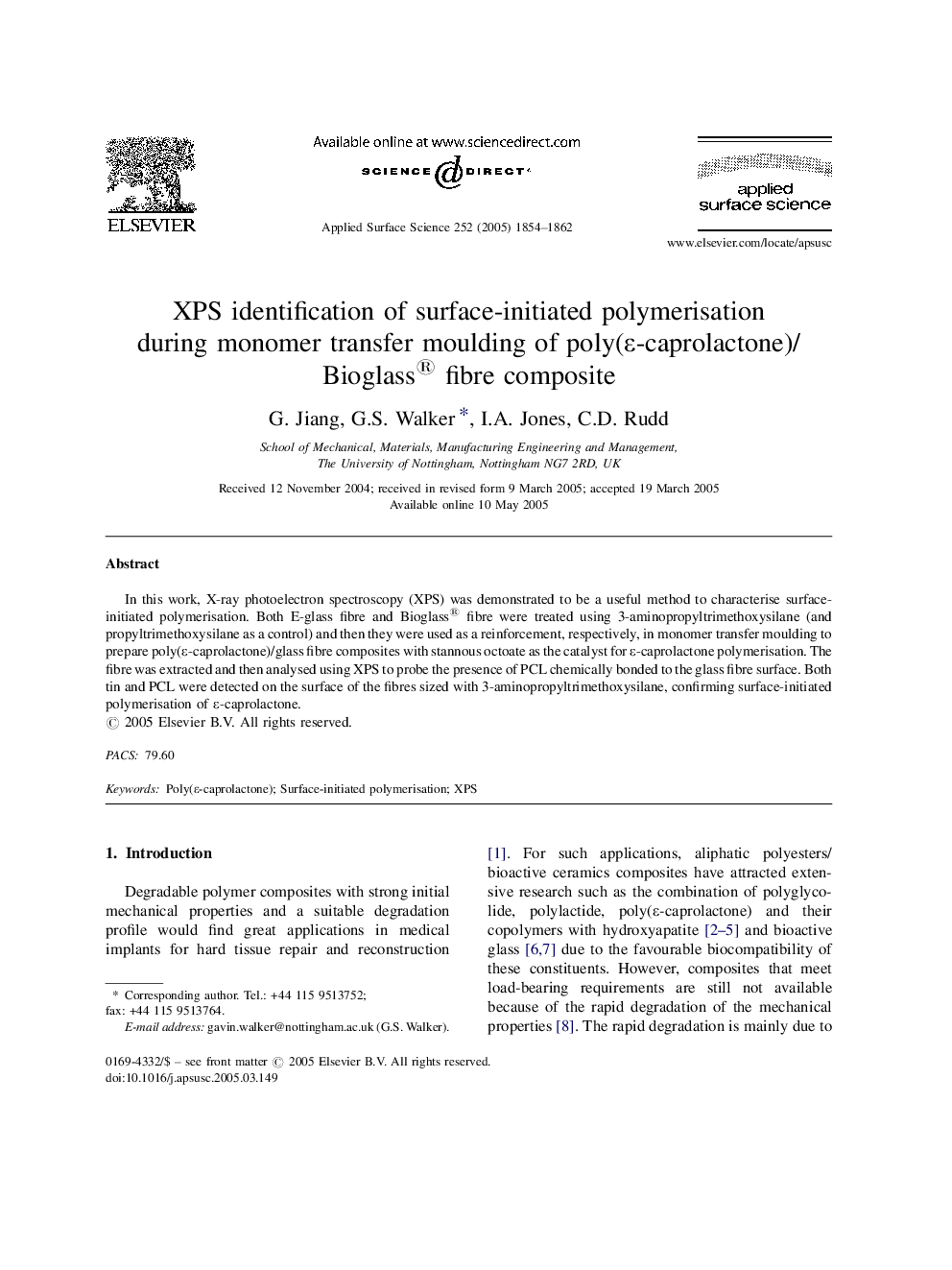| Article ID | Journal | Published Year | Pages | File Type |
|---|---|---|---|---|
| 5370540 | Applied Surface Science | 2005 | 9 Pages |
In this work, X-ray photoelectron spectroscopy (XPS) was demonstrated to be a useful method to characterise surface-initiated polymerisation. Both E-glass fibre and Bioglass® fibre were treated using 3-aminopropyltrimethoxysilane (and propyltrimethoxysilane as a control) and then they were used as a reinforcement, respectively, in monomer transfer moulding to prepare poly(É-caprolactone)/glass fibre composites with stannous octoate as the catalyst for É-caprolactone polymerisation. The fibre was extracted and then analysed using XPS to probe the presence of PCL chemically bonded to the glass fibre surface. Both tin and PCL were detected on the surface of the fibres sized with 3-aminopropyltrimethoxysilane, confirming surface-initiated polymerisation of É-caprolactone.
